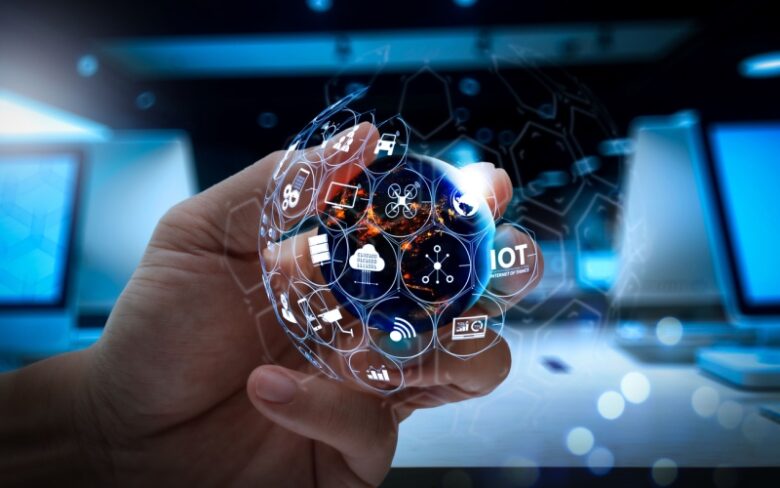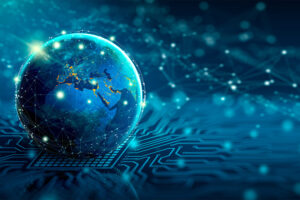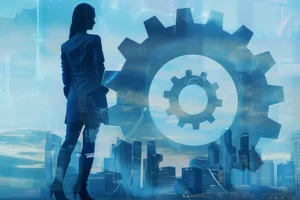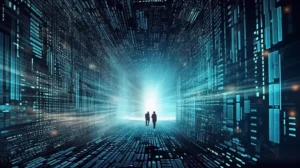The Internet of Things (IoT) is transforming the way people, devices, and businesses collaborate. It is one of the most powerful forces in the digital age. Connecting everyday objects to the internet allows them to collect and share real-time information. This capability is the essence of the IoT. The IoT empowers people to make smarter choices, improve their efficiency, and enjoy a more connected life. The IoT has quickly become an essential part of digital technology and is now a key driver of progress in almost every field. The ability to connect the real and virtual worlds is transforming markets, improving lives, and opening up unprecedented possibilities.
How to Understand the Basics of the IoT in Digital Technology
The IoT connects objects to the internet and enables them to communicate with each other. These devices, ranging from simple sensors to highly complex machines, can collect, transmit, and analyze data. This flow of information enables monitoring, automation, and proactive decision-making, making systems more intelligent. When the IoT is integrated into digital technology, businesses and customers gain greater control and insight and streamline processes that were previously manual. The IoT is making technology more responsive and user-friendly, whether it’s remotely adjusting room temperatures, tracking health information with a smartwatch, or managing supply chains across global markets.
The Internet of Things and How It Will Change Our Daily Lives
One of the most obvious ways the Internet of Things (IoT) is impacting digital technology is how it’s transforming daily life. Smart home devices, such as smart thermostats, lighting systems, and security cameras, make homes safer and more comfortable. They can be controlled via voice assistants or smartphones. Smartwatches and fitness trackers continuously collect user data and provide information about health and lifestyle. Connected cars offer navigation, entertainment, and enhanced safety features based on real-time data. This means that even cars are now part of the IoT ecosystem. When IoT is integrated into these aspects of daily life, it brings convenience and personalization to people’s lives that were once thought impossible.
The Internet of Things in Business and Industry
The applications of the IoT extend far beyond personal life. It drives efficiency and innovation in businesses and industries. In manufacturing, IoT sensors can monitor equipment health, predict maintenance needs, and reduce downtime. In agriculture, connected devices can monitor indicators such as crop health, weather, and soil moisture, enabling farmers to maximize crop yields and minimize waste. IoT helps stores track inventory and provide a more personalized experience for each customer. In healthcare, IoT devices enable doctors to monitor patients remotely and achieve better treatment outcomes. Because IoT can collect data, identify trends, and take action before they occur, it has become a crucial component of many business plans. It helps companies stay competitive in a rapidly changing digital world.
The Contribution of IoT to Smart Cities
The IoT also plays a key role in building “smart cities.” “Smart cities” refer to interconnected infrastructure that makes urban life safer, cleaner, and more efficient. IoT sensors are used in intelligent transportation systems to monitor congestion and improve traffic flow, reducing travel time and pollution. IoT devices connected to waste management systems can track recycling and waste collection, making them more environmentally friendly. Smart monitoring systems improve public safety, and utilities use IoT to monitor water and electricity consumption, reduce waste, and ensure a stable supply. The ability of IoT to connect countless systems is a key component of the “smart city” concept. This will make cities more pleasant for more people to live and work in.
IoT and Data-Driven Decision Making
The Internet of Things (IoT) can collect vast amounts of data, empowering people to make more informed decisions. These devices collect information in real time and analyze it to identify patterns, predict trends, and prevent problems before they arise. For example, IoT in healthcare can detect early warning signs in patients, enabling prompt care. IoT data helps companies track shipments and identify optimal delivery methods, reducing costs and wait times. Advanced analytics and artificial intelligence are transforming IoT data into actionable insights with unprecedented speed and accuracy. This enables businesses and individuals to make more intelligent and informed decisions.
Security Issues in the IoT Era
The IoT offers many benefits, but it also presents some challenges, particularly in terms of security. The interconnectedness of IoT devices makes them more vulnerable to hackers, making data protection crucial. Devices such as smart home systems, healthcare devices, and connected cars are susceptible to hacking if they lack proper security measures. Hackers can exploit these vulnerabilities to steal private data or disrupt services. To address this, strong encryption, regular updates, and robust security measures are essential. As the IoT increasingly integrates with digital technologies, security and privacy remain critical for preserving trust and driving adoption.
Conclusion
The Internet of Things (IoT) is connecting people, businesses, and cities in unprecedented ways, revolutionizing the way digital technology works. By bridging the physical and virtual worlds, the IoT offers unprecedented convenience, efficiency, and new ideas. Although we still need to address security and other issues, the benefits of the IoT far outweigh the risks. As more businesses and individuals embrace the IoT, it will continue to fuel progress, making everything smarter and more connected, and transforming our world. The IoT is more than just a technology; it is the key to a connected world.
FAQs
1. What is the essence of the Internet of Things?
People connect everyday objects to the internet to share and collect information. This is the Internet of Things (IoT).
2. How does the IoT improve daily life?
The IoT enables smart homes, connected cars, and personal technology to provide real-time information and automate tasks, making life easier.
3. Which sectors can best leverage the IoT?
Healthcare, manufacturing, horticulture, logistics, and retail widely utilize the IoT to enhance and streamline their operations.
4. Is the IoT secure?
Attackers can compromise the IoT, but strong security measures, such as encrypting and keeping data up-to-date, can mitigate the risks.
5. What is the future of the Internet of Things?
Thanks to 5G, artificial intelligence, and blockchain, the Internet of Things will see even more advanced applications. These technologies will transform smart cities, healthcare, and autonomous driving systems.



